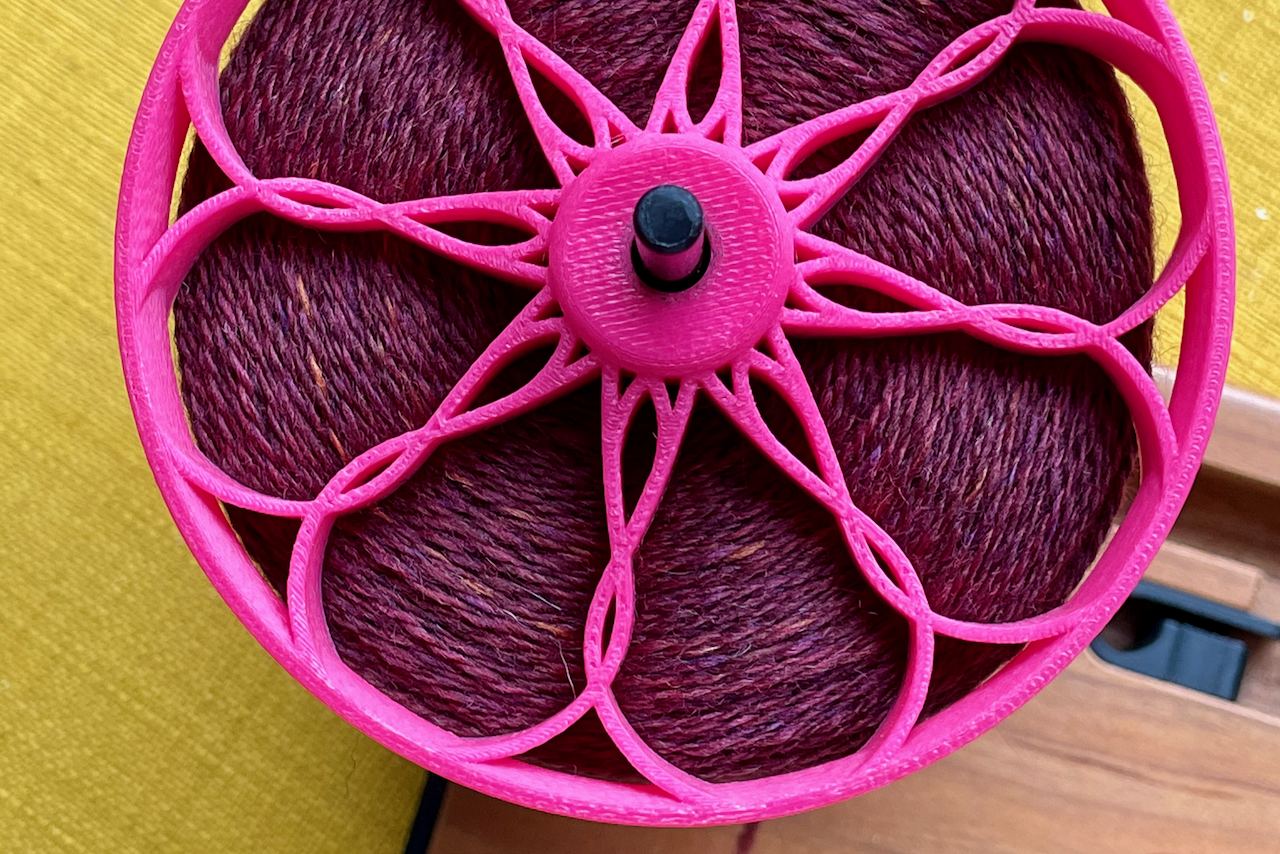A Handspun ‘Love Note’ Sweater
…sort of!
Back in May of 2021 I was in desperate need of a ‘palate cleanser’ project.
Another project has just been thrown into the naughty corner and I wanted to start something new that would be relatively quick but also a significant enough project to give me a bit of a confidence boost before returning to the other WIP. If you’d like to see the full story of the Love Note, my video project diary is here. But if you’re more of a text fan, read on!
In my handspun stash I found a 2-ply heavy fingering/sport weight skein I’d finished towards the end of 2020. The fibre was an old John Arbon mill special called Widow Twanky, a 45% Merino, 45% Corriedale and 10% Zwartbles blend which I’d picked up when Grace from Babbles Travelling Yarns and I did a mill tour a couple of years before.
Then I found an unbranded, bright raspberry pink solid mohair silk commercial yarn in my stash which went perfectly with it. I did a little swatch with one strand of the mohair silk and one strand of the handspun held double and the mohair just lifted the colour a bit and provided a very stroke-able halo to the fabric.
After some debate about other popular mohair-held-double patterns, I landed on the Love Note by Tin Can Knits (non-Ravelry link). It’s knitted in either lace and fingering weight held together or a single strand of DK weight so there are other options if you don’t want to use mohair! It’s a top-down, lace yoke design knitted in the round from a provisional cast-on with 3/4 length sleeves and a slight high-low hem. It also comes in a really wide range of sizes all the way from 24.5” to 72.5” chest.
Although I like the Love Note’s leafy lace pattern I wanted something a bit more geometric, so I started flipping through some stitch dictionaries and came across the triple chevron pattern in Barbara Walker’s first treasury (p200) which fitted perfectly into the Love Note pattern. There are no increases in that section, so it would be easy to substitute any other pattern you liked into there, or just leave the lace out completely.
As with most of my projects, this one didn’t go entirely according to plan. After knitting the yoke I noticed a random strand of yarn on the inside and it cut across one of the yarn-overs so it was also visible from the outside if you looked hard enough. Now I know nobody else would be likely to notice it but I would, so naturally I had to fix it. I couldn’t quite bear to rip it all out so I decided to drop some stitches back and pick them back up to resolve the problem. Look away now if you’re liable to faint at the sight of dropped stitches!
Eeek!
I’ve done this kind of thing before, but mohair definitely adds some difficulty to the procedure!
After the straight lace section, you add a few raglan increases and then separate for the sleeves. Apart from a bit of short row shaping at the bottom, the rest of the body is a nice mindless knit in the round. Then the pattern has you knit the sleeves but I chose to do the neckline first so I could try it on as I knit the sleeves and get an accurate impression of how long the sleeves would be.
For the neckline, you pick up the stitches from your provisional cast on, knit a decrease round or two and then so the ribbing at the neck. Doing it this way allows you to adjust the neckline fit to your preference. And it any of the technical elements of this knit sound daunting, Tin Can Knits have a series of blog posts that talk you step by step through the project.
I did full length sleeves instead of 3/4 and also added some extra decrease rounds at the cuff to create a more exaggerated balloon sleeve.
My handspun Love Note Sweater, with lace pattern modification.
I think this is a great option for a handspun project — with or without the mohair. It would also be a good way of using hand-dyed mohair silk against a solid main yarn or you’ve got the option of using a single strand of a DK weight instead. The pattern uses a relatively small amount of yarn, knits up quickly and is a really nice garment for spring through to autumn. I can definitely see myself making another one!






